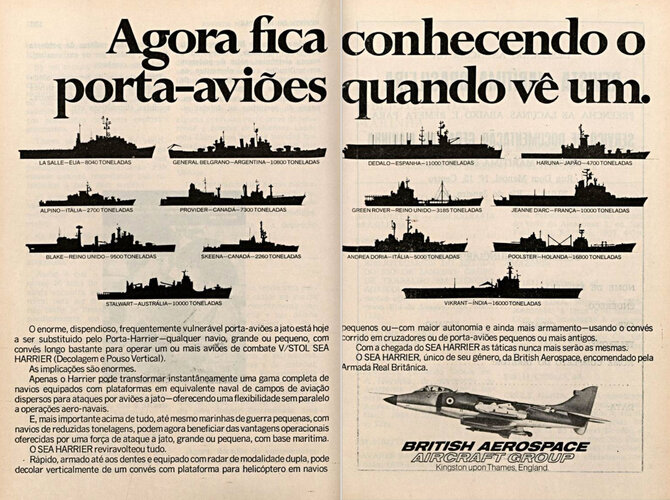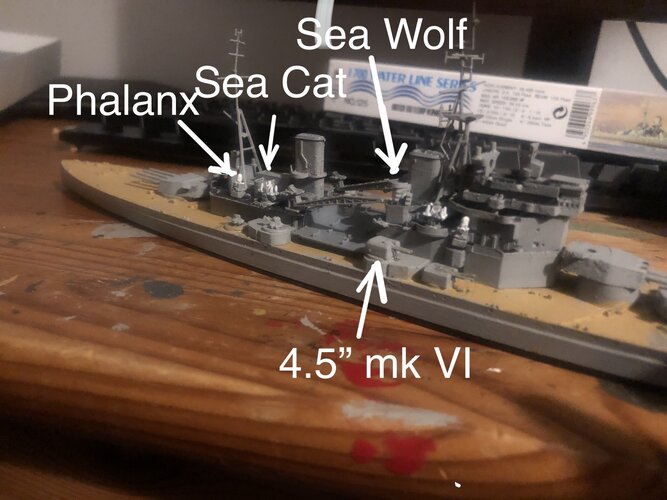-Type 992 TI set with GDS.3
-Type 960 WA set, with option for replacement with larger -960M or 960P antennas, or alternatively the Type 965 WAIR set.
-Replacement of all HA directors with MRS3 fitted with Type 903 radar. Ideally close to one-to-one ratio of mountings and directors, with directors and computers taking priority when competing with mountings and ammunition for space on the superstructure and below-deck volume.
-Replacement of 5.25-inch mountings one-to-one with 3"/70 N1 mountings. Controlled by MRS3.
-replacement of Bofors L60 Mk VI sextuple mountings with Bofors L70 Mk12 sextuple mountings, ideally on a one-to-one basis, but directors take priority. Controlled by MRS3 and ideally no less than two mountings per side. If L70s delayed, replace with Sea Cat Launchers.
-Removal of STAAG twins without replacement. If possible Mk V twins replaced by L70 Mk 11 twin mountings, controlled by TOM (Tachymetric One Man director) or ideally MRS3, but MRS3 directors for the 3"/70 guns and sextuple Bofors take priority for deck space and below-deck volume.
-Single Mk VII or Mk9 mountings are replaced by single Mk10 L70 mountings, with on-mount Type 6 Gyro-gunsights cut for L70 Ballistics.
-Type 176 or 184 self-protection and torpedo warning sets.
-If possible Camrose rocket propelled anti-torpedo torpedoes, launched from 4 sets of triple tubes.
-If at all possible, on both KGVs and Vanguard, modify "B" turret, handling equipment and magazine for firing of nuclear 14" and 16" shells respectively.
-Outfit UA8, UA9, UA10 ESM with YAZ analyser, and Type 667S and 667X Cooky Jammers.
-Enclosed superstructure and rebuilt Action Information Centre, with the following:
"Project Cambria" Automatic Surface Plot, AKA Outfit JYA
Alternatively 48 or 32-track CDS with DPT/Link 1, and if possible 2-level Operations Room
-ABCD protected machinery spaces with remote control of main machinery, new cased boilers and forced draught blowers.
-Blast-resistant funnels
-Helicopter landing spot on the quarterdeck


